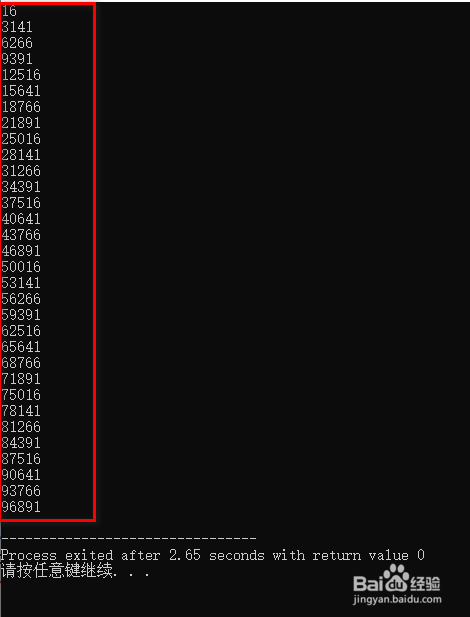C语言猴子分香蕉
1、打开Dev-C++

2、写好头函数
#include<stdio.h>

3、写好主函数

4、声明五个变量,one,two,three,four,five是每只猴子分成5堆后剩余的个数 ,使用穷举法,计算总共可能的数量
int temp,count,one,two,three,four,five;
//使用穷举法,count为香蕉总数,一个一个去尝试
//当one,two,three,four,five满足题目要求便输出count
//假设数量最多只有100000个,输出的结果,取最小的正确结果
for(count=1;count<=100000;count++)
{
temp=count;
one=temp%5;
temp=temp-temp/5-one;
two=temp%5;
temp=temp-temp/5-two;
three=temp%5;
temp=temp-temp/5-three;
four=temp%5;
temp=temp-temp/5-four;
five=temp%5;
//若one,two,three,four,five满足题目要求便输出
if(one==1 && two==2 && three==3 && four==4 && five==0)
{
printf("%d\n",count);
}
}

5、总体代码
#include<stdio.h>
void main()
{
//one,two,three,four,five是每只猴子分成5堆后剩余的个数
int temp,count,one,two,three,four,five;
//使用穷举法,count为香蕉总数,一个一个去尝试
//当one,two,three,four,five满足题目要求便输出count
//假设数量最多只有100000个,输出的结果,取最小的正确结果
for(count=1;count<=100000;count++)
{
temp=count;
one=temp%5;
temp=temp-temp/5-one;
two=temp%5;
temp=temp-temp/5-two;
three=temp%5;
temp=temp-temp/5-three;
four=temp%5;
temp=temp-temp/5-four;
five=temp%5;
//若one,two,three,four,five满足题目要求便输出
if(one==1 && two==2 && three==3 && four==4 && five==0)
{
printf("%d\n",count);
}
}
}

6、结果如下图
